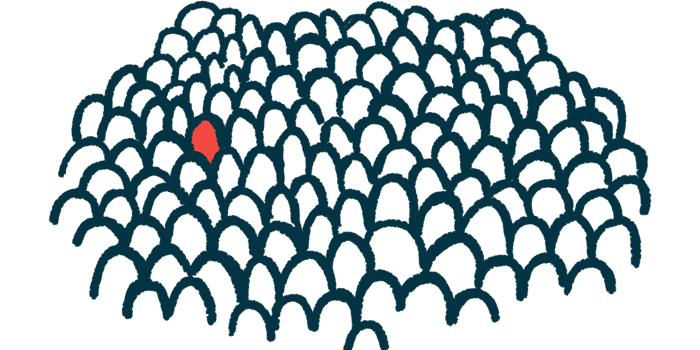Ectopic Cushing’s tied to rare yolk sac tumor in pancreas
1st report of adult Cushing's from this rare tumor producing ACTH precursors

A 27-year-old woman in China has become the first reported case of an adult developing ectopic Cushing’s syndrome as a result of a rare yolk sac tumor in the pancreas producing high levels of adrenocorticotropic hormone (ACTH) precursors, according to researchers.
A yolk sac tumor is a rare, malignant tumor that arises in cells that line the yolk sac — a tissue attached to the embryo that’s required for early blood supply during pregnancy — which later form reproductive organs.
“This case demonstrates the diagnostic value of ACTH precursor measurement in the diagnosis of ectopic Cushing’s syndrome,” researchers wrote in the report “Cushing’s syndrome caused by ACTH precursors secreted from a pancreatic yolk sac tumor in an adult—a case report and literature review,” which was published in the journal Frontiers in Medicine.
Cushing’s syndrome is a broad umbrella term that includes any condition driven by high cortisol levels, or hypercortisolism. Its most common type, Cushing’s disease, is caused by a tumor in the brain’s pituitary gland that leads to the excessive production of ACTH, a hormone that prompts the adrenal glands sitting atop the kidneys to produce cortisol.
Ectopic Cushing’s caused by tumor outside pituitary gland
In rarer cases, ACTH — or its precursors — is released by tumors found outside the pituitary gland, a form called ectopic Cushing’s syndrome.
Now, a team of researchers in China have reported the case of a woman with ectopic Cushing’s caused by a yolk sac tumor in the pancreas that was releasing high levels of ACTH precursor molecules.
The woman was admitted to the hospital with abdominal pain and nausea. She also had some Cushing’s symptoms, including a moon face, acne, thin skin, easy bruising, and infrequent periods. A physical examination revealed the woman had high blood pressure, excess weight, hirsutism (excessive hair growth), muscle weakness, and dark skin in the nails and knuckles of both hands.
Further tests revealed she had higher-than-normal cortisol levels in the urine over the course of one day. Her blood cortisol levels remained high after an overnight low-dose dexamethasone suppression test, confirming the diagnosis of Cushing’s syndrome. Her blood ACTH levels were within the normal range.
She had several complications associated with the rapid onset of hypercortisolism, including vertebral fractures accompanied by back pain, diabetes, and high blood pressure associated with hypokalemia (low blood potassium levels).
Test results consistent with ectopic Cushing’s diagnosis
After a high-dose dexamethasone suppression test, her cortisol levels remained high. By contrast, a corticotropin-releasing hormone stimulation test did not increase her cortisol levels. Both test results were consistent with the diagnosis of ectopic Cushing’s.
“The marked hyperpigmentation in the context of normal ACTH levels pointed to the presence of an underlying tumor producing circulating ACTH precursors,” the researchers wrote.
This diagnosis was confirmed with further tests showing the presence of high levels of ACTH precursors.
CT imaging revealed the presence of a mass in the pancreas, along with metastases — new tumors that form in a different part of the body — found in lymph nodes located above the shoulders. Analysis of tumor cells obtained from the lymph nodes was consistent with a pancreatic yolk sac tumor.
The patient was treated with metyrapone, a cortisol-lowering medication sold under the brand name Metopirone, which did not reduce her cortisol levels. Therefore, surgery to remove both adrenal glands was performed, after which she was started on glucocorticoid and mineralocorticoid replacement therapy to compensate for the lack of adrenal function.
Woman responded poorly to chemotherapy
She also received several lines of chemotherapy, to which she responded poorly. Further tests indicated her cancer was amenable for a targeted therapy due to the presence of a V600E mutation in the BRAF gene, which is involved in cell growth. She was thus started on dabrafenib (sold as Tafinlar) and trametinib (sold as Mekinist).
Although she initially responded to treatment, her disease progressed and she died approximately one year after her diagnosis.
“This case illustrated the utility of ACTH precursor measurement in confirming an ACTH-related [disease] and distinguishing an ectopic from a pituitary source for Cushing’s syndrome,” the researchers wrote.
“This adds to the list of origins of ectopic ACTH syndrome in adults,” they wrote.









